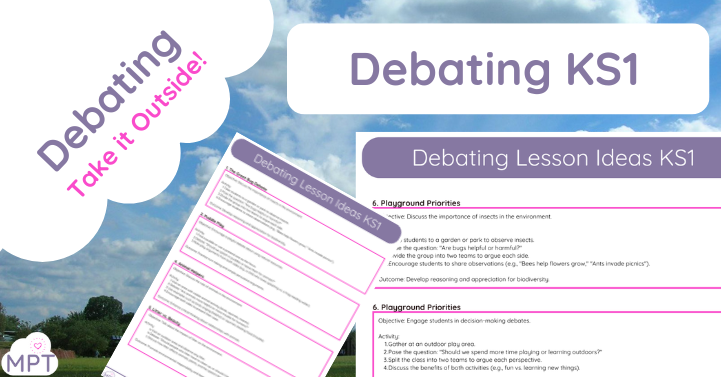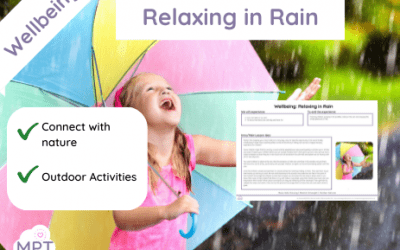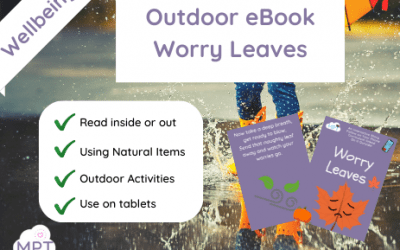Wellbeing: Leaf Love ⇒Use the Petal Power to take you back to your own childhood and use the holistic joys of making...
Leaf Love (Wellbeing)
Sep 8, 2021
Wellbeing: Leaf Love ⇒Use the Leaf Love to help children have a method to help them connect with nature. Connecting to...
Relaxing in the Rain (Wellbeing)
Sep 8, 2021
Wellbeing: Relaxing in the Rain ⇒Use the Relaxing in the Rain lesson plan to make the most of outdoor learning. Do...
Mindful Mud (Wellbeing)
Sep 8, 2021
Wellbeing: Mindful Mud ⇒Use the Mindful Mud method and let mud and mess make you all feed good! ⇒Single Lesson Plan We...
Worry Leaves (Outdoor eBook)
Sep 7, 2021
Worry Leaves ⇒This eBook can be read outdoors in indoors, with tasks to do outdoors after ⇒Single Text We will...
Wellbeing: Puddle Pondering
Sep 2, 2021
Puddle Pondering is a fabulous way to get your sillies out. Being silly is extremely important for children to be...
Wellbeing : Clearing Cloudy Minds
Sep 2, 2021
Clearing cloudy minds and being mindful is imperative in all of our lives. We lead busy, fast-paced lives and...
Super Positive Power Leaves
Sep 1, 2021
Super Positive Power Leaves Play 'Super Positive Power Leaves' and end your lesson on a high. ?Ask the children to...
Well-being: Worry Leaves
Sep 1, 2021
Worry Leaves This lesson plan will cover the following objectives: A chance to talk and be open with our feelings. To...
Well-being: Mood Leaves
Sep 1, 2021
Mood Leaves Use this natural and nurturing lesson plan and let nature help the children to connect with their...
Celebrating Diwali
Aug 20, 2021
Celebrating Diwali ⇒This lesson is best done outside and involves some messy...
Country Dancing Instructions
Aug 20, 2021
Country Dancing for kids ⇒This lesson can be done outside or in a hall space. ⇒ Do it in all weathers ⇒Single Lesson...
Harvest Festival (Celebrations)
Aug 20, 2021
Harvest Festival (Celebrations) ⇒This lesson is best achieved outdoors. ⇒ Do it in all weathers ⇒ Uses natural...
Institute for Outdoor Learning – Horizons – Summer Edition
Jul 28, 2021
Ten activities all Muddy Kids Should be doing over the Summer This article can be found in the Horizon Magazine...
Bug Spotter Template
Jun 9, 2021
Use this bug spotter sheet to get your class outside muddya nd messy! Supports the new EYFS curriculum.
S1E2: Let’s Play Outside with Greg Bottrill
Apr 29, 2021
On today's must-have outdoor learning podcast we have the wonderfully inspiring Greg Bottrill who has come on the show...
Farm Park Resource (Footprint Spotter Sheet)
Apr 25, 2021
Going on a Farm Park Trip? Use Farm Park Resource (Footprint Spotter Sheet) to get your class outside, in the mud and...
Muddy Phonics Phase One Planning Unit
Apr 22, 2021
Muddy Phonics Phase One Planning (Scheme of work) will help you make that muddy step to take more of your phonics...
New In

Football Phonics Games Phase 2

Debating Lesson Ideas KS2

Debating Lesson Ideas KS1

P4C Nature Based Lesson Ideas

ASD Intervention – Emotional Regulation Programme

Egyptians KS2

ASD Intervention Programme (Social Skills)

Nature Craft Christmas – Fine Motor Task

Maya Civilisation KS2




















